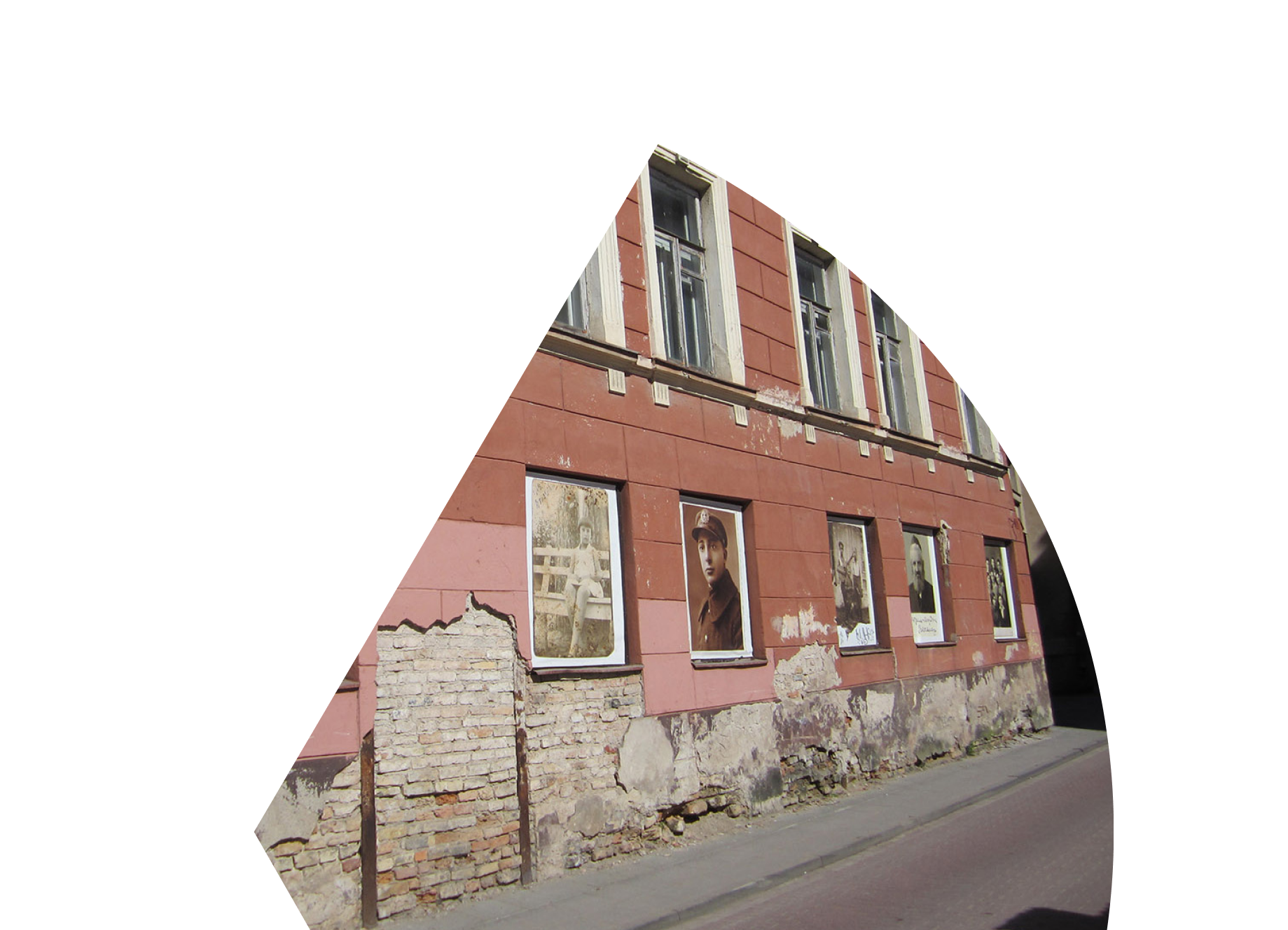
Vilnius Ghetto Library
Learn about the history of the Vilnius Ghetto Library and the IHRA’s involvement with safeguarding the site.

Learn about the history of the Vilnius Ghetto Library and the IHRA’s involvement with safeguarding the site.
The Vilnius Ghetto Library is intimately linked to both the Holocaust and postwar efforts to preserve Jewish culture, literature, and history. According to the International Commission for the Evaluation of the Crimes of the Nazi and Soviet Occupation Regimes in Lithuania, the number of Jewish victims was between 200,000 and 206,000. This figure means that most of the Jewish community of Vilnius lost their lives.
Since 1910, the building housed Vilnius’s largest Jewish library, the Meficei Haskalah library. During the first Soviet occupation in 1940, the library was nationalized but continued to operate. After the Nazis invaded the Soviet territory of Lithuania in summer 1941, German and Lithuanian forces murdered more than 21,000 Jews. Around 40,000 surviving Jews were forced into the small area of the Vilnius Ghetto on 6 September; more arrived later.
Besides lending books, the library, which was now called by the Vilnius Ghetto Library by the inmates of the ghetto, held a small museum, post office, and playing field, among other functions. It served as a clandestine center of armed Jewish resistance. In the basement of the building, members of the United Partisan Organization constructed a soundproof room for testing weapons they had managed to smuggle in from outside.
In September 1943, almost all of the remaining residents were taken to Paneriai and shot, though several hundred were sent to concentration camps as forced laborers.
In 1944, some Lithuanian Holocaust survivors founded a Jewish Museum in the former library building. This remained open until 1949, when the Soviet government closed it. Until 1999, the building was part of the Vilnius Musical Conservatory. Though the building remained standing, it was in very poor repair. In 2011, the building passed into the care of the Vilna Gaon Museum of Jewish History.
The current premises of Holocaust history exhibition at Vilna Gaon Museum of Jewish History are too small to hold or display most of the collections. The plan is to establish a new Memorial Museum of Holocaust in Lithuania and Vilna Ghetto in the Ghetto library building. But, after years of neglect, that building is not architecturally sound and needs major repair. The funding for the renovation of the building was allocated in 2019 by the Ministry of Culture of the Republic of Lithuania. Each September, the Vilna Gaon Museum of Jewish History holds a memorial event outside the Ghetto Library building.
Beginning in 2015, the Vilnius Ghetto Library was placed on the agenda of multiple IHRA Plenary Meetings as a site at risk, signaling that the international community supported concrete action to safeguard the site.
On 22 March 2017, the building was listed in the registry of cultural heritage of Lithuania. Funds secured by the Ministry of Culture from the State Investment fund were used to stabilize the emergency condition of the building. Plans followed for a Holocaust History and Vilnius Ghetto Memorial Museum, which were to be housed in the building, pending further financial support.
On 30 November 2017, the Ministry of Culture of Lithuania announced to the IHRA’s Member Countries that they had succeeded in securing the funds requested by the Vilna Gaon State Jewish Museum for the preliminary preservation of the Vilnius Ghetto Library, demonstrating a commitment to preserving physical sites related to the Holocaust.
“These developments are a major success for the IHRA and especially for Lithuania. The government’s actions are preserving their own historical heritage,” said Kamile Rupeikaite, then Chair of the IHRA’s international expert Memorials and Museums Working Group. “It is important for the IHRA to support these initiatives through the substantial foundational stages of physical preservation to ensure the sites are turned into places of remembrance and learning. We preserve the sites for the victims and the survivors, but the opportunity to visit authentic sites also stimulates interest and learning among the public, providing a direct and tangible link with history and people in the past.”
Further, funds of 29,000 Euros were granted by the Ministry of Culture and used by the Museum for emergency response work in 2018.
In December 2023, the Vilna Gaon Museum of Jewish History announced that the Memorial Museum of the Holocaust in Lithuania and the Vilna Ghetto will open in the former Vilna Ghetto Library building by 2026. The IHRA remains actively involved in the effort to restore the building into a fitting memorial museum.
At the Debrecen Plenary, IHRA experts recommend that the IHRA focus its efforts on protecting and preserving Holocaust-related sites throughout its Member Countries and beyond. This includes the former Vilnius ghetto library site.
As part of its work on endangered sites, IHRA experts continue highlighting the former Vilnius ghetto library site and the Seventh Fort in Lithuania during Plenary Meetings.
The Vilnius Ghetto Library is listed in Lithuania’s registry of cultural heritage and the country’s Ministry of Culture secures the funding needed to stabilize the building.
Emergency response work to secure the site is carried out.
The IHRA’s Safeguarding Sites Project team visits the Vilnius Ghetto Library.
The Vilna Gaon Museum of Jewish History announced that the Memorial Museum of the Holocaust in Lithuania and the Vilna Ghetto will open in the former Vilna Ghetto Library building by 2026.
Hover over the data visualization to explore.